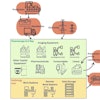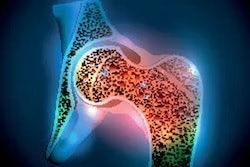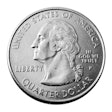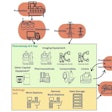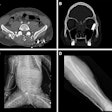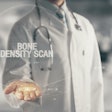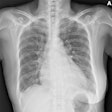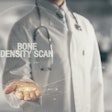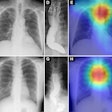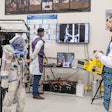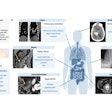Opportunistic use of chest x-rays may be feasible for identifying patients at risk of bone loss outside the traditional screening age, according to research published July 14 in the Journal of Primary Care & Community Health.
The finding is from a study that estimated the prevalence of "bone demineralization" on 390 x-rays from patients ages 50 to 65, and such application could be particularly useful in settings where dual-energy x-ray absorptiometry (DEXA) may not be readily available, noted lead author Naga Chinapuvvula, MD, of the University of Texas in Houston.
"Opportunistic use of chest x-rays obtained for other indications could potentially be used to identify patients with signs of bone demineralization and at risk of osteoporosis in primary care settings," the group wrote.
Screening for osteoporosis is mainly done by measuring bone mineral density using DEXA scans, but screening does not usually start until individuals are 65 years old. Many people ages 50 to 65 may unknowingly suffer from progressive bone loss and may be at risk of osteoporosis, the researchers explained.
However, chest x-rays are the most common imaging examinations done in healthcare settings, and signs of bone demineralization can be detected on x-rays usually as decreased cortical thickness and increased radiolucency due to loss of trabeculae, they noted. But whether reporting demineralization on chest x-rays done for nonskeletal reasons can potentially impact skeletal health outcomes in at-risk patients has not been explored, they added.
To that end, the researchers identified all patients between the ages of 50 and 65 who had chest x-rays at the emergency department of their large Level 1 trauma center for any indication between May 1, 2021, and May 31, 2021. The most common indications were for cardiopulmonary issues (74.5%).
Just four of the 390 cases had bone demineralization comments in their x-ray reports. On independent review by a fellowship-trained emergency radiologist, however, 49 patients (12.6% of the total study population), six men and 43 women, were identified as having signs of bone loss. Of these 49, two had a “bone demineralization” comment in their reports.
Based on the 2020 population of 64.1 million adults ages 50 to 64 in the U.S., the authors thus estimated that approximately 8.4 million people could have bone demineralization, they noted.
“These are patients who would otherwise be missed due to being outside the age (50-64 years) recommended in screening guidelines,” the group wrote.
Currently, it is not standard practice for a radiology report to include demineralization status in the impression of the report for chest x-rays done for emergencies and other nonskeletal indications, yet such practice could greatly benefit patients, the authors suggested.
They noted that implementing this would require training to raise radiologists’ awareness about commenting on bone structure in older adults and could place a considerable burden on healthcare systems and providers.
“However, it may prove cost-effective by enabling earlier detection of osteoporosis and preventing related complications,” the researchers concluded.
The full study is available here.



